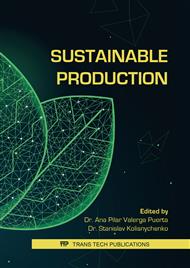p.1841
p.1846
p.1853
p.1860
p.1867
p.1874
p.1880
p.1886
p.1892
Understanding Cold Spray for Enhanced Manufacturing Sustainability
Abstract:
High pressure cold spray has been showing increasing promise and application for structural repairs and coating applications where wrought like strengths are required. For example, numerous applications have been developed for repairing high cost and long lead time parts for the aerospace and defense market, such as aircraft skin panels, titanium hydraulic lines, aluminum valve actuator internal bores, hardened and chromed steel shafts, gas turbine engine parts, magnesium castings, and many more. These processes also have direct application in commercial markets like transportation and heavy industry. In particular, parts with lead times in excess of 12 months have been successfully repaired and re-introduced into service. This saves not only the direct cost of the part, but also returns the system to service much sooner. Additional benefits of field application with a hand-held nozzle assembly are also possible, particularly for power plants, refineries, and other large industrial plant operations. Cold spray consequently has a tremendous opportunity to enhance manufacturing sustainability by repairing parts that previously could only be replaced and recycled. It is environmentally friendly, as there are no toxic fumes or other harmful emissions from cold spray. Furthermore, because parts are being repaired and refurbished rather than replaced, there is tremendous cost, energy, and overall environmental benefit, making cold spray a “green” technology and an excellent technology for enhancing the long-term sustainability of high value assets.
Info:
Periodical:
Pages:
1867-1873
Citation:
Online since:
December 2018
Authors:
Price:
Сopyright:
© 2018 Trans Tech Publications Ltd. All Rights Reserved
Share:
Citation:



